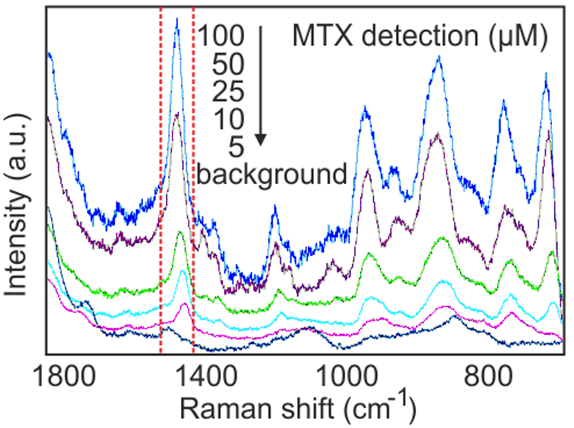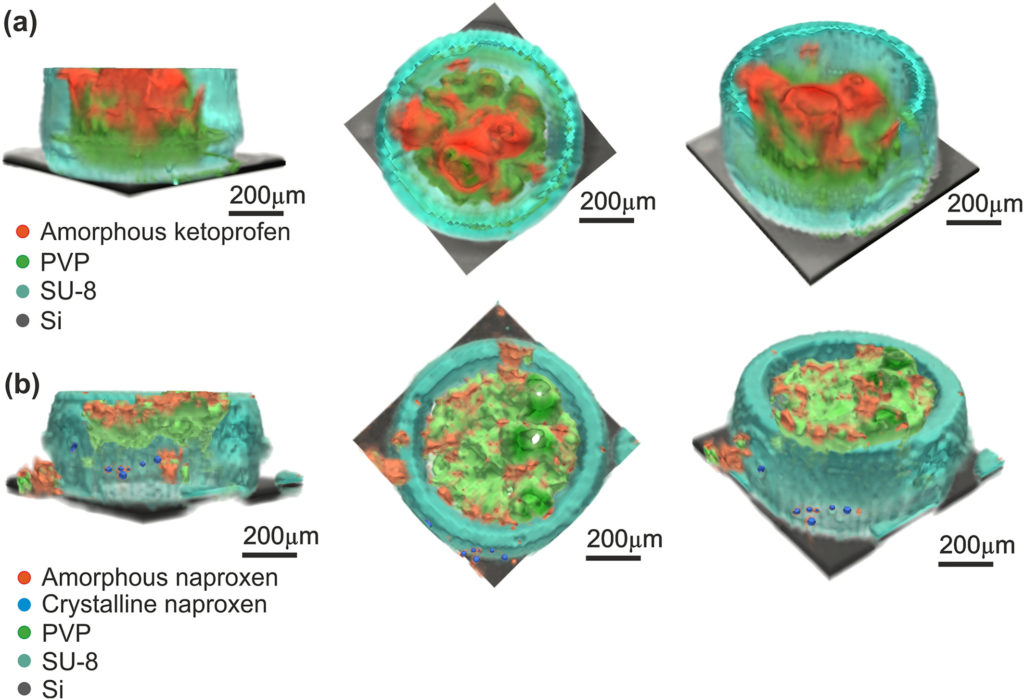Applications for
miniRaman microscope
For research, industry, universities and consumers
Surface‐enhanced Raman spectroscopy (SERS) is a well‐established analytical tool in various biosensing applications that allows detection of analytes down to the single molecule level. It has been shown that the dominant part contributing to SERS is the electromagnetic (EM) enhancement mechanism, which is based on extreme amplification and localization of the incoming optical field by metal nanoparticles that support localized surface plasmon resonance (LSPR). Efficient LSPR coupling between nanoparticles leads to EM enhancement factors >108. Sites containing highly confined optical fields in the vicinity of metallic nanostructures are often referred to as the EM “hot spots.”
For SERS, despite its phenomenal sensitivity, reliable quantification of target molecules has been hindered by i) non‐uniform nature of the plasmonic near fields, ii) fluctuation in the SERS signal intensities due to unspecific binding, and iii) poor wafer‐to‐wafer reproducibility and uniformity of SERS substrates. To circumvent these issues, large area SERS mapping is an advantageous approach for obtaining statistically reliable and reproducible results which significantly improves limit of detection (LoD). The method is particularly relevant for quantification of low‐abundance molecules, for example, at sub‐nanomolar concentrations where recording large SERS maps also greatly reduces the error of estimated molecular concentrations.
Typically, if Raman active molecules display high affinities toward a SERS surface, satisfactory SERS signals can be obtained. However, a multitude of important molecules, such as p‐coumaric acid and glucose do not bind to nanoplasmonic surfaces. In these cases, obtaining reliable SERS spectra already at concentrations <1 µm is a challenging task. The SERS signal intensity is low and typically comparable to the SERS substrate background originating from, for example, surface contaminants. Here, large area SERS mapping is highly suitable.
Here we demonstrate an example of SERS mapping of methotrexate (MTX), see SERS spectra to the right.
3D Raman imaging
Due to high sensitivity of miniRaman MRm it is suitable for 3D chemical imaging of multicomponent materials which are transparent/partially transparent for a laser beam. Here we present an example of combined volumetric chemical maps of the microcontainers (MC) used for oral drug delivery. After multicurve resolution analysis of volumetric Raman map it is possible to conclude that (a) PVP (polymer) was homogeneously distributed throughout the MCs, (b) amorphous ketoprofen was deposited on the top of MCs walls and over the surface of PVP and (c) the Si substrate response was recorded only at the bottom of the map.


